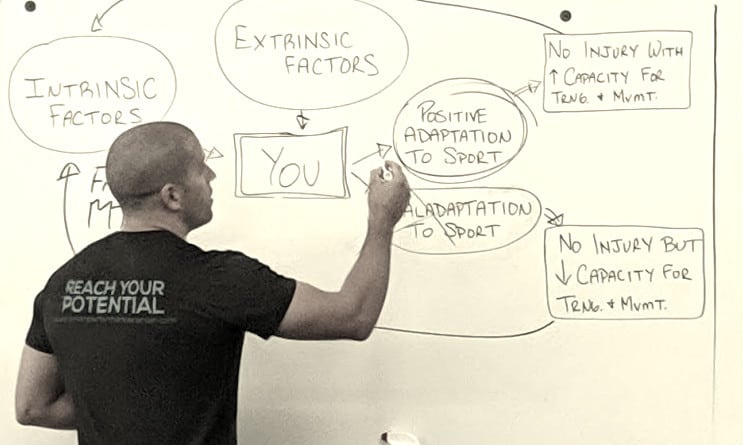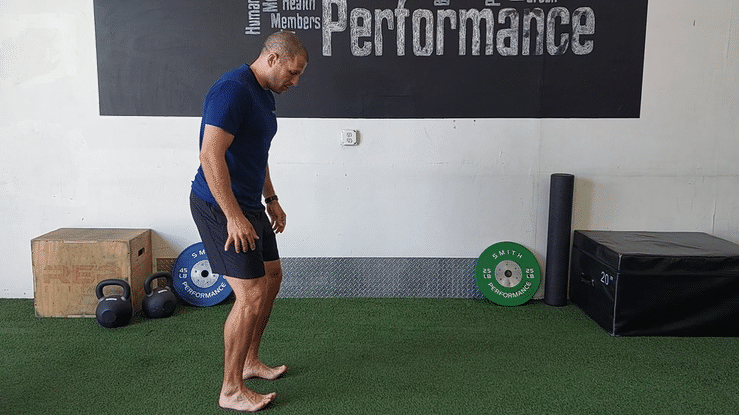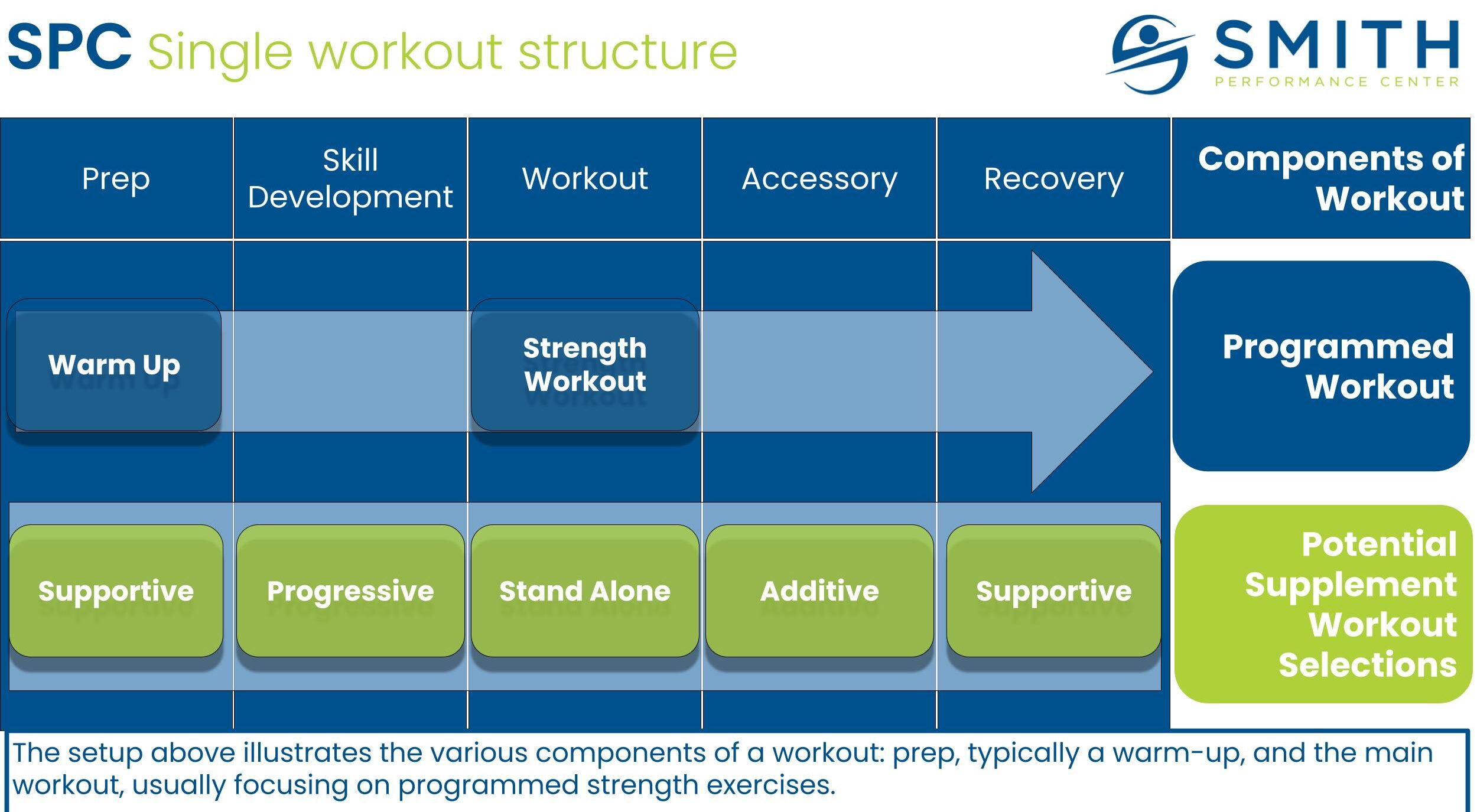Not all home plans are made the same.
Home plans are therapeutic exercise lists that undergird your journey in physical therapy. Unfortunately, home plans can stall your progress. This happens for a variety of reasons – the home plan becomes an afterthought to your care, the physical therapist is overloaded with clients, the overuse of assistants, or too much of an emphasis on what is done to you by the practitioner versus what you can learn to do yourself.
We see each of these situations when reviewing the histories of new clients with long-term injuries.
The home plan is a critical component of your rehab plan in physical therapy.
Our team regularly helps new clients who have been doing the same home plan from physical therapy for years which is not helping. This includes obvious mistakes like stretching an irritated nerve, overloading a painful joint with weight-bearing exercise, or making it so long that the client never does it.
We want to go over each mistake and offer ways you can get what you need from your home plan.
The 7 Home Plan Mistakes Ruining Your Progress in Physical Therapy
Bad home plans share common mistakes. Here are the 7 most common mistakes we see with home plans:
- You are terrible at doing it
- You don’t understand the purpose of the home plan (nor does your therapist)
- Lack of a prompt to indicate when you do the home plan
- It’s too long
- It does not address your main complaint
- The home plan is ‘just stop doing’ your activity
- It makes you feel worse
You are terrible at doing it
If you cannot do the prescribed exercise or activity, it should not be in your home plan.
While you may think this is obvious, it is far and away the most common mistake. If you cannot perform a movement, it should not be in your home plan because you will not do it correctly. If you perform it incorrectly, you can make the symptoms worse.
There are a few reasons this happens.
First, there is often pressure to progress your exercise. This shows you are getting better. Progression makes sense in later phases of rehab, but when you are developing your skill, it is good to become a master at a few things that make your symptoms better.
Don’t feel pressure to progress to a new movement if what you are doing is making you feel better. Increase the sets, reps, or intensity but keep doing the movements you master.
Second, you forget how to do it. This is natural, which is why practicing over and over matters. So when you attempt the home plan a few days after your last session and you struggle to remember how you will probably be terrible at it. Try to do the home plan immediately after a session, especially if there are new movements or activities.
The final cause is that you were never taught the exercise or learned it wrong. This can happen with the overuse of assistants or when a PT gets too busy to teach you. How can you be expected to master your home plan if you are one patient among many being led through an exercise list by an inexperienced PT tech?
You won’t.
When the exercise list is turned into your home plan, you will make mistakes because you were not coached or corrected. Do not be afraid to ask for more practice if you are not sure how to perform something.
You don’t understand the purpose of the home plan
You need to know the purpose of your home plan.
Your physical therapist needs to be able to explain why you are doing what you are doing at home. There are four main purposes for the home plan: supporting the diagnosis, understanding triggers, managing your own symptoms, and improving contributing factors.
Supporting the diagnosis
Supporting the diagnosis means that your diagnosis is not as clear as we want.
So we use the home plan to target the suspected pain generator. We do not want to have any other variables present. For example, imagine you have pain in the buttock and it is not clear if the pain is coming from the hamstring attachment or from your back. If the physical therapist believes it is most likely your back, the home plan will just target the back, not the hamstring.
If you do the home plan and there is no improvement, then the lower back is no longer the main suspect.
Understanding the triggers
Understanding your triggers is critical. We use the term trigger as a catch-all term for the activities and movements during the day that make symptoms worse. Trigger investigation is critical because they are the bane of feeling better but is often ignored.
We dig into this in our articles on trigger management:
7 Tools to Overcome Invisible Triggers Stalling Your Rehab Progress
The 5 Components of Invisible Triggers That Cause Your Rehab Progress to Stall
Why physical therapy exercises are not enough to get you better?
Managing your own symptoms
Managing your own symptoms means you apply the successful treatment from a PT visit for yourself at home. If low back traction works to reduce your pain with an exam, you will traction on your own or with a partner. If a brace makes it feel better, you will wear the brace at home.
Improving contributing factors
The final purpose of the home plan is to address contributing factors.
A contributing factor is anything that is causing you to feel symptoms or in some way keeping the problem around.
Unfortunately, home plans often include just these exercises. Your home plan will almost look like a workout routine. While this is important, contributing factors can be resolved if the pain is addressed.
Lack of a prompt to indicate when is it done
We always need to consider what tells you to do the home plan.
All action requires a prompt.
A prompt can be an existing activity like prior to the patient’s jog. It can be time-based like every morning at 8 am. It can be after lunch or when you stand up. It can also be every time the patient experiences pain. Whatever the prompt is, we must tie the home plan to the prompt.
| Common Prompts You Can Use |
| Perform when you have pain or symptoms |
| Perform based on a specific time of the day |
| Perform after an activity that you consistently do (habit stack) |
| Perform during an activity that you do (during a run or while exercising) |
The lack of a prompt is more clear if you are struggling to do your home plan.
We check to see if you are actually able to perform the home plan (if you are terrible at doing the home plan, that is a different problem and we want to make sure you learn how to do it better). Then we look at how your pain presents. Pain is the best prompt for doing a home plan focused on managing your own symptoms.
When you have pain, then you do the home plan.
But if the issue is not pain, but a contributing factor like poor balance, we look for what you do every day. Let’s say you brush your teeth. We would stack the habit of practicing your single balance right after you brush your teeth.
It is too long
Every additional activity, exercise, or trigger added to your home plan reduces the likelihood that you will do it.
If your home plan takes an hour, it is highly unlikely you will do it. Remember, the home plan forms the foundation of your physical therapy journey. The time commitment matters.
A long home plan also means we are not clear on what we are doing with your case. If you find your home plan starting to grow with your physical therapist, ask them what the purpose of each activity and exercise is.
Is it meant to help determine the diagnosis?
Is it helping with trigger management?
Is it focused on managing symptoms or improving the contributing factors that exacerbate your injury?
The physical therapist may not realize the home plan is getting too long. We are not the ones completing it.
A brief review can help to clean it up and drastically reduce the length.
It does not address your main complaint
If you suffer from debilitating lower back pain, a nasty headache, or the complications of a recent surgery, the home plan needs to address these specific issues.
Your main complaint is the reason you scheduled the appointment. If you find your physical therapist focusing on your thoracic spine mobility after a total hip arthroplasty, there is likely an issue of not addressing the main complaint. This happens because the body is interconnected. Individuals will come into physical therapy with contributing factors and impairments that are hard to ignore.
This includes findings of weakness or stiffness in other areas of the body.
We agree that these issues should be addressed, but only after the main complaint is sufficiently managed.
The home plan is ‘just stop doing’ your activity
The number one recommendation a patient receives when having pain is to stop the activity causing the pain.
When you start to feel better, you think the problem is solved. When you return to the activity, you don’t notice pain for the next couple of weeks, but then you feel a slow return of your familiar pain. Our team refers to this cycle of ‘just stop doing’ as fake progress. There is a strong assumption that time off will solve the problem. The strategy may be effective for a new, traumatic injury, but for a long-standing injury or one that keeps on recurring, there is no reason to believe time off will help.
Focus on trigger management instead and develop a plan that supports doing your activity.
For example, if running hurts, run uphill.
If lifting hurts, remove the painful movement pattern, not all lifts.
If walking is painful, use a brace, lift, or cane to make it pain-free.
These strategies keep you moving and avoid the common issue of fake progress that leaves you in a worse place after taking time off.
It makes you feel worse
The mantra ‘no pain, no gain’ backfires on many clients.
They think that pain is required for the healing process. When you injure your body, pain is expected, but the tools inside the home plan should not amplify your pain. This indicates you are overloading the injured tissues or that the wrong tissue is being targeted.
Pain is not the only indication of making you worse.
The following can indicate you are getting worse:
- Symptoms are noted farther away from the original spot
- Change in quality of the pain (throbbing, dull, aching, or more diffuse over a larger area)
- Consistent, delayed symptoms after you do your home plan (this can be 2-3 hours after the home plan is performed)
- Feeling of tightness or motion loss
- Increased heat noted (especially around joint injuries)
- Tingling or numbness
- A feeling of swelling or fullness in the area
Don’t assume this is a normal reaction. Discuss the symptoms with your physical therapist. There can be interactions with your home plan and your normal daily activities that cause you to feel worse.






